Revisiting Microsoft's biggest canceled devices — from revolutionary phones to dual-screen PCs
As Microsoft turns 50, we take a look at some of the canceled devices that we almost got from the Redmond giant.
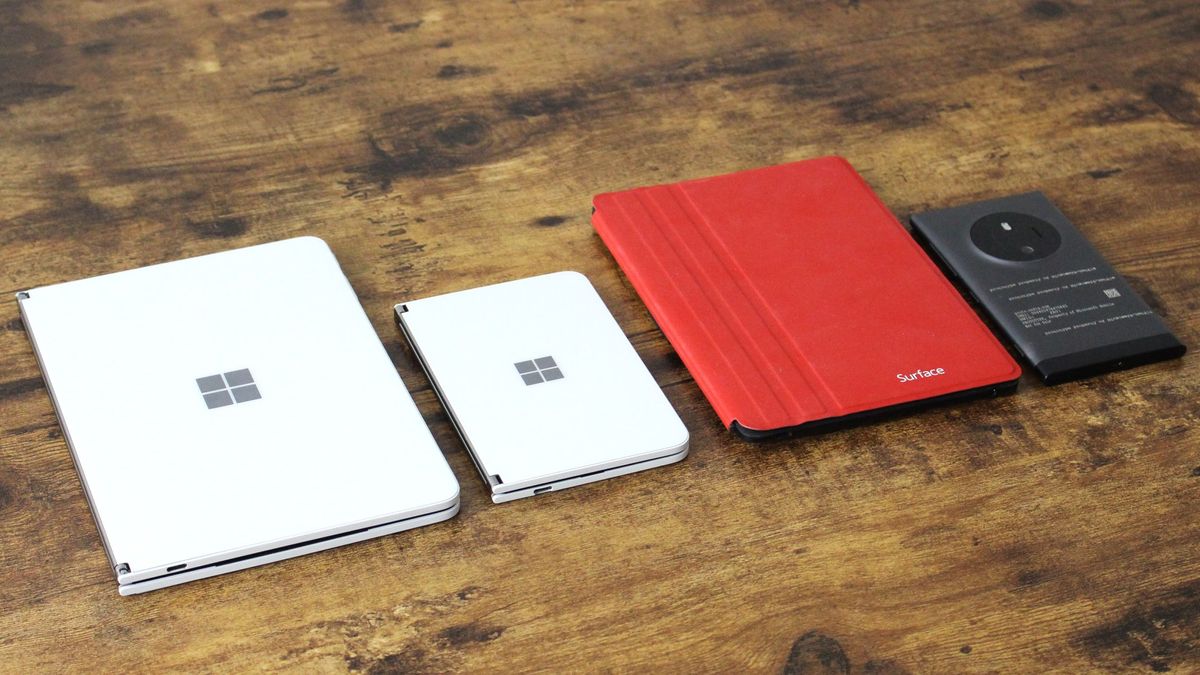
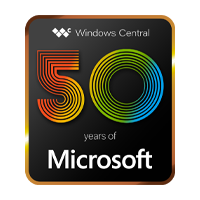
Microsoft has never been a hardware company, but it has certainly dabbled with the idea. With dabbling comes ideas that never make it off the ground. T
To celebrate Microsoft’s 50th anniversary, we wanted to take a look back at its most famously scrapped devices in the last couple of decades.
Microsoft Courier (2010)
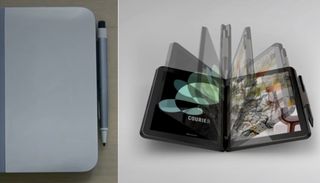
Microsoft has spent the better part of a decade exploring concepts around dual-screen computing, and the Microsoft Courier was the first true internal effort to get something off the ground as more than just a research project.
Courier explored the idea of a digital notebook, which focused entirely on digital inking and pen experiences, along with touch. It featured two identical 7-inch screens joined via a hinge mechanism that allowed the device to open and close like a book.
The device was purported to run a specialized version of Windows, separate from the mainline Windows effort that was at the time focused on early Windows 8 development. This means the device wouldn't run Windows apps.
Instead, Courier would have had its own app platform, which developers would need to build dedicated apps for if they wanted to support the device. The entire experience was built around a digital journal, with virtual pages you could swipe between to take down notes and drawings.
Unfortunately, Courier was canceled in 2010 for reasons that are unknown. Rumors suggest the project was canceled for many reasons, including the fact that it wasn't going to run Windows 8 and support traditional or metro Windows apps.
Get the Windows Central Newsletter
All the latest news, reviews, and guides for Windows and Xbox diehards.
Although it never shipped, Courier certainly laid the groundwork for the company's future dual-screen efforts in Surface Duo and Surface Neo.
Lumia McLaren (2014)
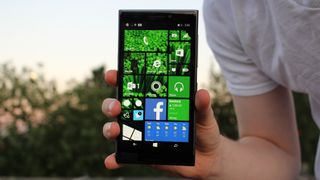

In 2013, rumor’s emerged that Nokia and Microsoft were working on a unique flagship Lumia handset, designed as a successor to the Lumia 1020 and featuring special “3D Touch” functionality that would let users manipulate the device without touching the screen.
The device was code-named McLaren featured a 5.5-inch FHD LCD display and an aluminum unibody chassis, which was a big departure from the all-polycarbonate designs of prior Lumia handsets at the time. The device’s big selling point was 3D Touch, which was being co-developed with Microsoft.
Microsoft was building a new UX paradigm for McLaren called MixView, which was designed to let app tiles on the Windows Phone Start Screen explode into smaller tiles when a user hovered their finger over an app. This UX was super fluid and satisfying to use, and it’s a shame it never shipped.
Other features unique to McLaren were sensors built into the edges of the device that could identify how the device was being held, and automatically apply things like screen orientation lock. Apps would have also been able to tap into these sensors, adding virtual buttons along the edge of the phone for actions.
McLaren was supposed to launch towards the end of 2014 as the latest flagship Windows Phone, but the product was canceled in the summer of that same year. The reason for its cancellation isn’t truly known, but it’s believed that Microsoft pulled the plug as the 3D Touch technology was too expensive and difficult for average consumers to grasp.
Surface Mini (2014)
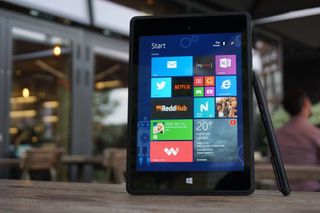

Surface Mini is a famous one, primarily because it was canceled at the very last minute. Codenamed Iris, the Surface Mini was supposed to be an 8-inch Windows RT tablet that prioritized touch and pen input.
Surface Mini began development in 2013 and was planned to be announced alongside the Surface Pro 3 in 2014. The device would have competed head-to-head with the iPad mini, designed as a digital notebook for on-the-go note-taking and integration with OneNote.
The display was a high-resolution 1080p LCD panel, and the chassis was made of a felt-like material. That chassis included a kickstand attached to a pen loop designed to store the Surface Pen, which this device was built around.
The kickstand was also unique, the first to support three different angles instead of two. A little fun fact, this kickstand design would later be recycled for use on the Surface 3 a year later.
Microsoft ultimately canceled the Surface Mini just weeks before it was supposed to be announced. The company had already ordered an initial round of production units that it intended to sell, and marketing materials were also complete and ready to go.
Why was it canceled? It’s believed that Windows RT was the primary culprit. At the time that the Surface Mini was supposed to be announced, Microsoft had already decided to move away from Windows RT.
The company was in the early development phase of Windows 10, an operating system that would never come to Windows RT devices such as the Surface Mini. At the time, Windows 10 on Arm wasn’t ready, and so the company had no choice but to kill the device.
Xbox Joule (2014)
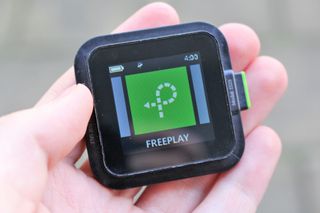

Before the Microsoft Band, there was the Xbox Joule. This was a prototype fitness watch incubated by the Xbox team that was supposed to sync with the Microsoft Kinect and track fitness and health statistics in games that utilized them.
Joule featured a low-resolution 1.5-inch touchscreen display and basic firmware that tracked heart rate, steps, and calories burned. It featured replaceable bands and a charging dock.
The interface was very square, similar to the design language of Windows 8 and the Xbox dashboard at the time. It was manipulated with gestures, exiting apps by swiping to the side or down from the top of the screen.
The Xbox Joule was canceled sometime in early 2014, and much of the early work put into it later laid the foundations for the Microsoft Band that launched later in 2014. It's unknown why the Xbox Joule was canceled.
Microsoft Band 3 (2016)
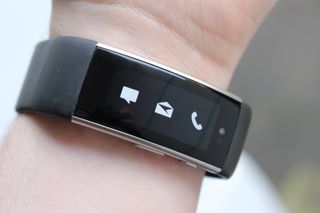

In keeping with wearables, the Microsoft Band 3 was canceled in 2016 when the company decided that it was no longer interested in being in the fitness wearables game. Band 3 had been spotted on the wrists of a number of employees, and the product was quite far along in the development pipeline before it was scrapped.
Band 3 featured a slightly thinner chassis, a new charging mechanism with an easier-to-attach and adjust clasp, and new waterproofing capabilities that allowed the watch to track water-based activities such as swimming.
Externally, the device looked similar to the Band 2, though it wasn't identical. The thinner chassis meant it fit better on your wrist, and the device was also supposed to be more durable to help address tearing issues that were common on the Band 2.
Surface Andromeda (2018)
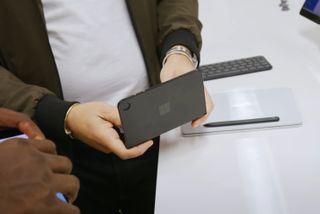
Andromeda might be Microsoft's most famously canceled device. Although it was revived in the form of Surface Duo, the Surface Duo wasn't exactly like Andromeda. Surface Andromeda was Microsoft's first attempt at a dual-screen phone, but this was running Windows and featured an entirely different user experience.
The Andromeda device was built around a version of Windows that prioritized pen and digital ink. The idea was that the device would be a digital pocket notebook that could travel with you and keep all your thoughts written down with the pen, which attached to the front of the device with magnets and charged.
The OS was built around a digital journaling experience. The home screen was an inking canvas that you could write notes on, paste images into, and customize to your heart's desire. It still featured UWP apps and a Start screen, which could be accessed by swiping in from the left.
Unlike Surface Duo, the device featured a rear camera. Metal rails around the sides of the device gave it a more premium feel in the hand too. Andromeda was canceled in 2018, but the hardware was later recycled for Surface Duo in 2019, albeit with some notable tweaks and changes.
Surface Neo (2021)
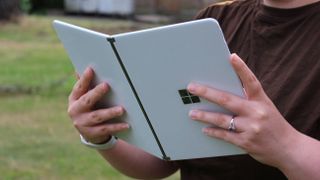

Surface Neo is Microsoft's most recent effort at a dual-screen computer, attempting to achieve the same goals as Courier but with a modern Windows OS twist. It began development in 2018 under the codename Centaurus.
Surface Neo features two identical 9-inch screens that support both pen and touch input, joined together by a 360-degree hinge mechanism that enabled the device to open and close like a book and flip all the way around into single-screen mode.
Neo would have run a special version of Windows called Windows 10X that would have been able to run Windows apps. This version of Windows was the first to pioneer the centered Start menu and Taskbar interface we see today on Windows 11.
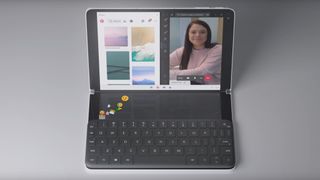
On the inside, Surface Neo was powered by an Intel Lakefield processor, paired with 8GB RAM. The device also supported wirelessly charging both the Surface Pen and a new Surface Neo keyboard accessory, which could lay flat on the left screen and turn the Neo into a mini laptop.
Surface Neo was canceled in 2021, after Microsoft scrapped Windows 10X and Intel abandoned the Lakefield processor.
Surface Cronos (2022)
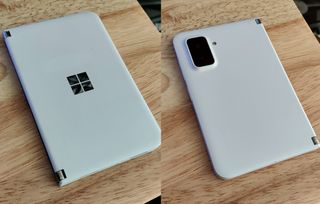
Shortly after the launch of Surface Duo 2, Microsoft scrapped plans to ship a mid-range variant of the dual-screen smartphone. The device was codenamed Cronos, and was supposed to ship as a stopgap between the Duo 2 in 2021 and the Duo 3 in 2023.
Cronos featured an all-plastic exterior and a dual-camera array on the back of the device. The displays were also cheaper, missing the curved glance bar that the Duo 2 had. The device was all about cutting corners to bring the price down.
Unfortunately, the device was scrapped when the company decided that dual-screen devices weren't working. Both Cronos and Duo 3 were scrapped, and the company began working on a true folding screen phone.
In 2023, Microsoft would cancel all plans to release more phone hardware.

You must confirm your public display name before commenting
Please logout and then login again, you will then be prompted to enter your display name.

